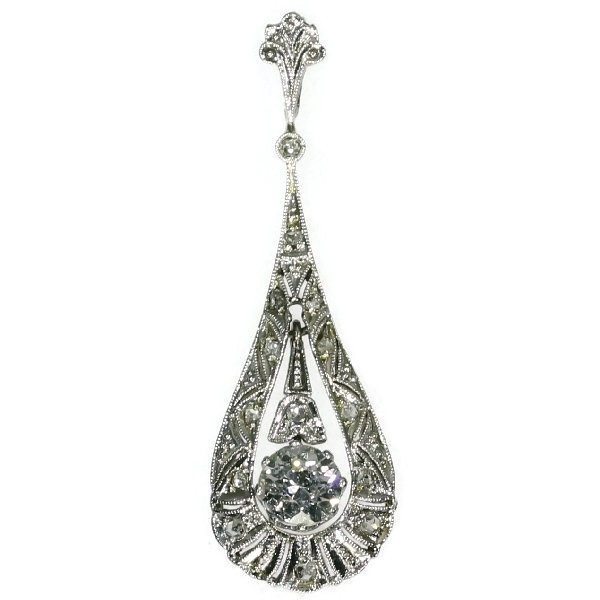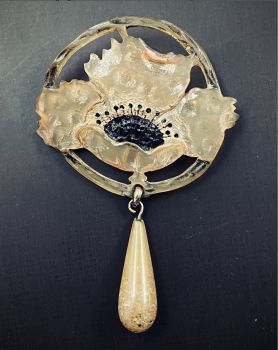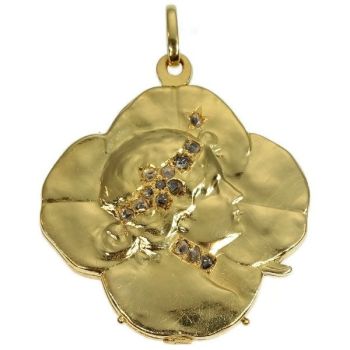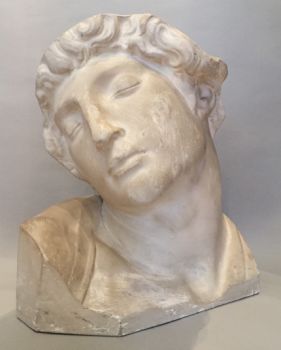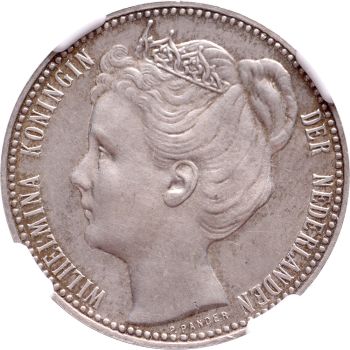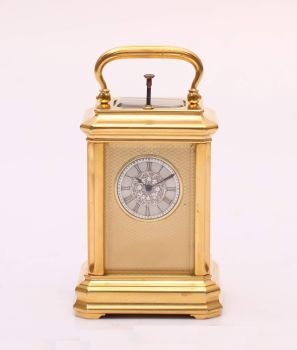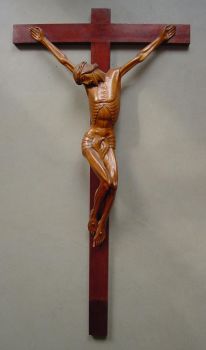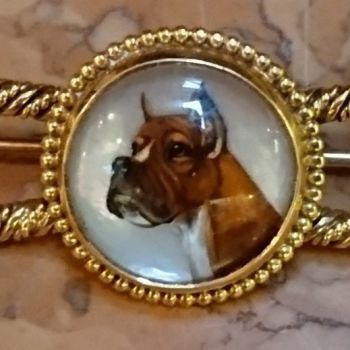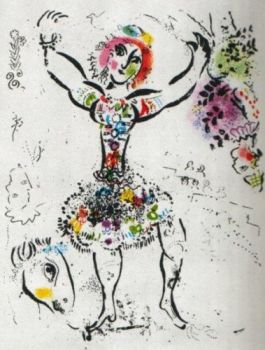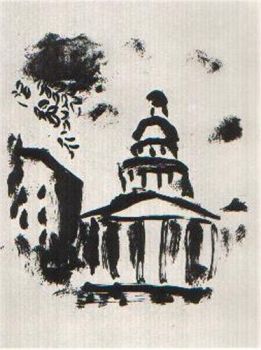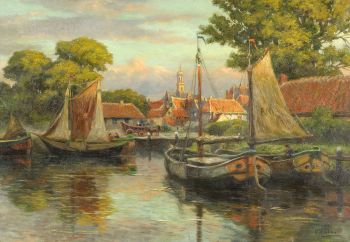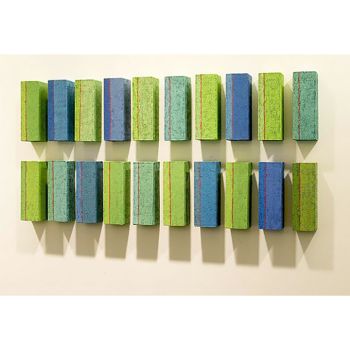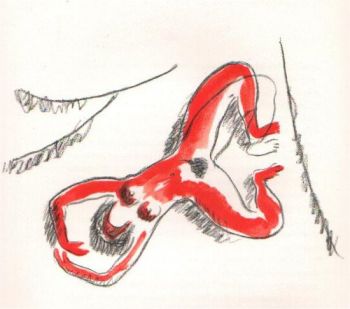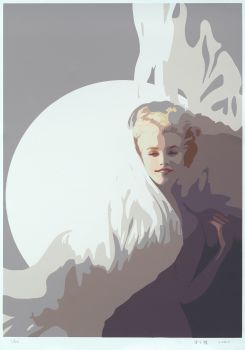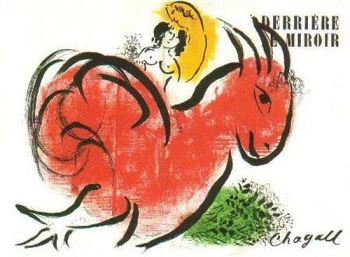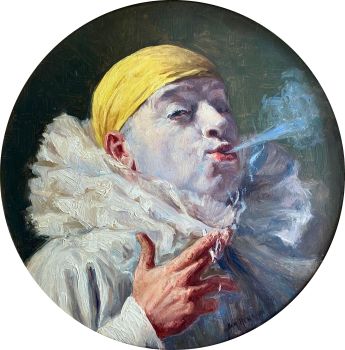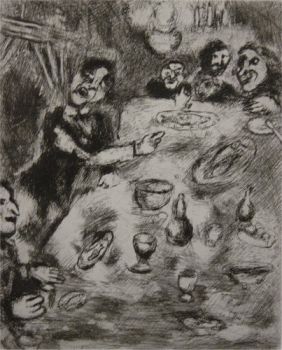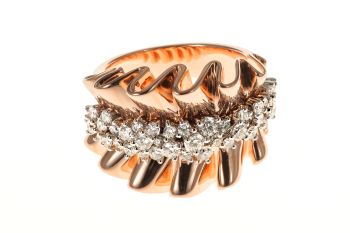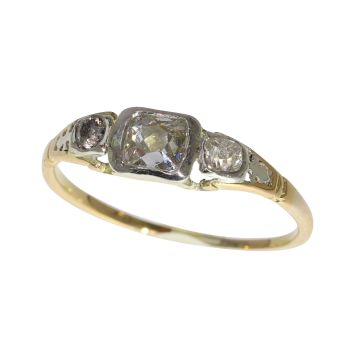Edwardiaanse hanger met grote diamant 1920
Onbekende Kunstenaar
DiamantEdelsteen
Momenteel niet beschikbaar via Gallerease
- Over kunstwerk
This 18K white gold Edwardian pendant from 1920 honours its era's spirit through the lacy piercings in its pear-shaped halo of 13 rose rose cut diamonds around a dangling old European cut diamond. Topped with a subtle diamond sprouting a double French lilly, this charming jewel could be the icing on your cake coming straight from the love bakery.
Antique jewelry object group: pendant
Condition: excellent condition
- (more info on our condition scale)
Country of origin:Although it does not carry any legible control marks we believe this to be of Belgian origin.
Style: Edwardian - The Edwardian era or Edwardian period in the United Kingdom is the period covering the reign of King Edward VII, 1901 to 1910. The death of Queen Victoria in January 1901 and the succession of her son, Edward, marked the start of a newcentury and the end of the Victorian era. While Victoria had shunned society, Edward was the leader of a fashionable elite which set a style influenced by the art and fashions of continental Europe—perhaps because of the King's fondness for travel. Theera was marked by significant shifts in politics as sections of society which had been largely excluded from wielding power in the past, such as common labourers and women, became increasingly politicised.
- See also: Edwardianor more info on styles
Style specifics: The fineness of line and lacey aspect of the piece are typical for the Edwardian period.
Period: ca. 1920
- (events and facts in 1920)
Material: 18K white gold
- (more info on precious metals)
Diamonds: One old European cut diamond with an estimated weight of approx. 0.65 crt. and 13 rose cut diamonds and senailles. A senaille is a simplified rose cut diamond, a small diamond chip with perhaps a few polished facets. We do not have the weight of the rose cuts diamonds nor the senailles which is normal in our trade when it comes to rose cut diamonds and senailles.
Note: All diamond weights, color grades and clarity are approximate since the stones were not removed from their mounts to preserve the integrity of the setting.
Total diamond weight: approx. 0.65 crt.(without the rose cut diamonds)
Birthstones: Diamond is the birthstone (or month stone) for April.
- (more info on birthstones)
Hallmarks: No trace.
- (more info on hallmarks)
Dimensions: height 3,78 cm (1,49 inch)
Weight: 2,70 gram (1,74 dwt)
Reference Nº: 14185-0059
Copyright photography: Adin, fine antique jewelry
white gold jewelry, jewelry with emerald, latest acquisitions,
antique jewelry, estate jewelry, vintage jewelry or modern jewelry
Jewelry with birthstones (or month stones) for:
January - February - March - April - May - June - July
August - September - October - November or December.
Additional information:
jewelry glossary - wall of fame - visit us in Antwerp - subscribe to our mailinglist.
What is antique jewelry? - What is estate jewelry? - What is vintage jewelry? - Over kunstenaar
Het kan voorkomen dat een kunstenaar of maker onbekend is.
Voor sommige werken is het niet te bepalen door wie het gemaakt is of dat het is gemaakt door (een groep) ambachtslieden. Voorbeelden zijn beelden uit de Oudheid, meubels, spiegels of handtekeningen die vaak niet duidelijk of leesbaar zijn. Maar ook sommige werken zijn helemaal niet gesigneerd.
Ook kunt u de volgende beschrijving vinden:
•"Toegeschreven aan …." waarschijnlijk een werk van de kunstenaar maar niet zeker of gedeeltelijk
•“Atelier van ….” of werkplaats van” een werk uitgevoerd in het atelier of atelier van de kunstenaar, eventueel onder zijn toezicht
•“Cirkel van ….” een werk uit de periode van de kunstenaar die zijn invloed laat zien, nauw verbonden met de kunstenaar maar niet noodzakelijkerwijs zijn leerling
•“Stijl van ….” of “Volger van ….” een werk uitgevoerd in de stijl van de kunstenaar, maar niet noodzakelijk door een leerling; kan eigentijds of bijna eigentijds zijn
•“Wijze van ….” een werk in de stijl van de kunstenaar maar van latere datum
•"Na …." een kopie (van welke datum dan ook) van een werk van de kunstenaar
•“Getekend…”, “Gedateerd….” of “Ingeschreven” dan is het werk gesigneerd/ gedateerd/ ingeschreven door de kunstenaar. De toevoeging van een vraagteken duidt op een element van twijfel
•"Met handtekening ...", "Met datum ...", "Met opschrift..." of “Draagt signatuur/datum/opschrift” dan is de handtekening/datum/opschrift toegevoegd door iemand anders dan de kunstenaar
Artwork details
Related artworks
Onbekende Kunstenaar
Gevleugelde Venetiaanse Beker1624 - 1626
Prijs op aanvraagPeter Korf de Gidts - Antiquairs
1 - 4 / 12Fontana
Flower basket brooch-pendant1900 - 1905
Prijs op aanvraagAns Hemke-Kuilboer Juwelier & Antiquair
1 - 4 / 24- 1 - 4 / 24
Onbekende Kunstenaar
18e-eeuwse diamanten armband met 2000 jaar oude Romeinse intaglio's1790
€ 23.000Adin Fine Antique Jewellery
 Gecureerd door
Gecureerd doorDanny Bree
1 - 4 / 24

